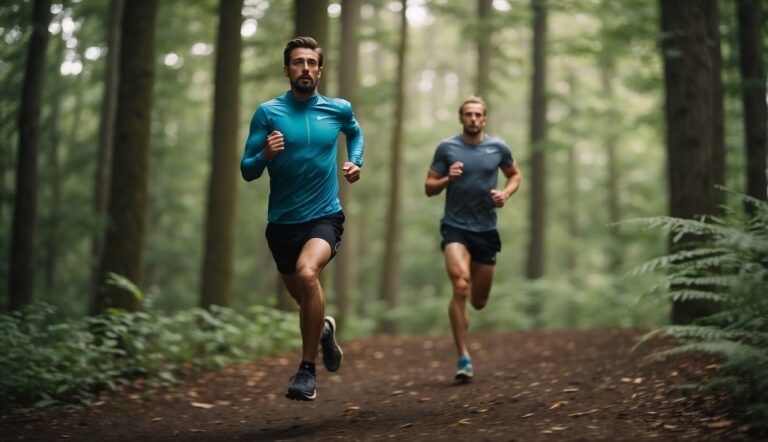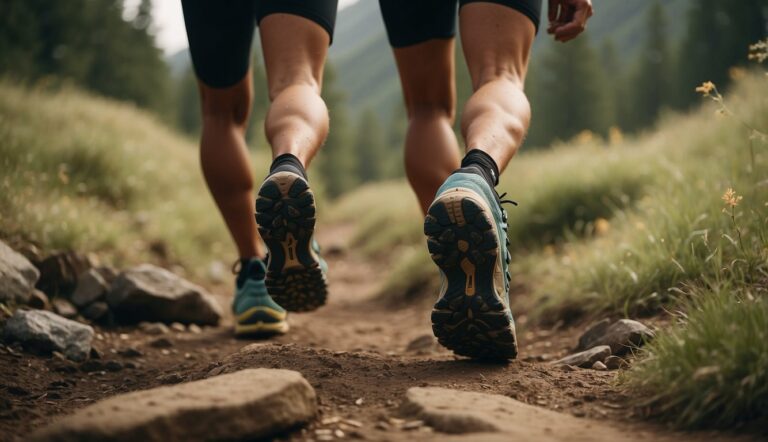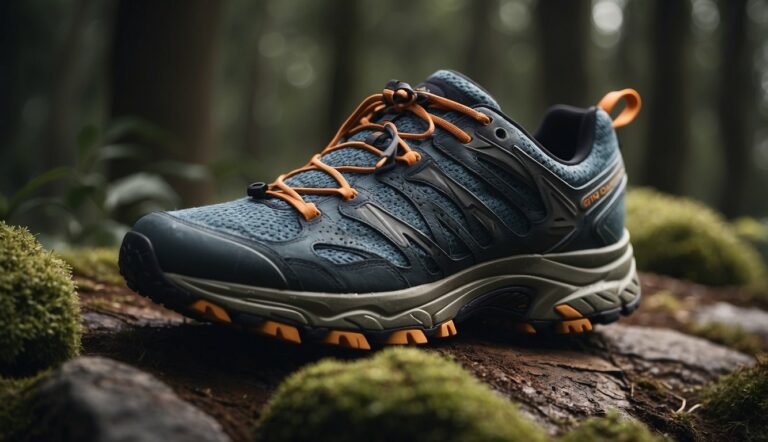Trail Running and Orienteering: Guide to Mastering Both Disciplines
Trail running is a sport that tests one’s physical endurance and connection with nature. As a UESCA certified running coach, I often advocate for trail running to my clients for its dynamic blend of cardio, strength, and agility. Navigating natural and varied terrains offers an exceptional workout, requiring runners to adapt to the changing ground underfoot while sharpening their focus to maintain a strong and steady pace.
Orienteering takes the physical challenge of trail running and elevates it with a mental component. Often described as a ‘thinking sport,’ orienteering requires participants to find a series of checkpoints, or controls, in the wilderness with the help of a map and compass. It’s a test of navigation skills and speed, compelling runners to make strategic decisions on the move.
Integrating orienteering into trail running cultivates a comprehensive fitness experience. While trail running improves cardiovascular health and builds muscular strength, the added element of orienteering enhances mental sharpness, decision-making under pressure, and spatial awareness. Together, these sports offer a holistic approach to health that engages the mind just as vigorously as the body.
Essentials of Trail Running
Trail running is a dynamic sport that requires a balance of physical fitness, technical skills, and specialized gear. To excel, it’s crucial to focus on the right equipment, adaptability to various terrains, and techniques to prevent injuries.
Equipment and Footwear
I can’t overstate the importance of proper footwear; it’s the cornerstone of effective trail running. Select shoes with ample traction to handle diverse terrains, and consider a snug fit to maximize support for your ankles. In muddy or slippery conditions, shoes with a more aggressive tread can improve stability.
Recommended Footwear Checklist:
- Traction-focused soles
- Ankle support features
- Breathable, quick-dry materials
Adapting to Terrain
Experiencing various terrains is a given in trail running. I always advise runners to develop strong neuromotor control to maintain balance on uneven surfaces. Incorporating strength training into workouts can enhance your stability, thereby reducing the risk of falls and associated injuries like stress fractures or ankle sprains.
Key Terrain Adaptation Strategies:
- Regular balance exercises
- Agility drills
- Hill repeats for strength and endurance
Injury Prevention Techniques
Preventing injuries is fundamental to maintaining consistent training. I emphasize incorporating a variety of exercises aimed at preventing musculoskeletal and overuse injuries, which are common amongst trail runners. Focus on exercises that boost flexibility and strength, especially around high-risk areas such as the plantar fascia and iliotibial band.
Injury Prevention Essentials:
- Regular core and lower body strengthening
- Stretching routines post-run
- Adequate rest and recovery periods
Fundamentals of Orienteering

Orienteering combines map reading and quick decision-making for a dynamic physical and mental challenge. It demands focus, strategic planning, and an understanding of topography to navigate through diverse environments.
Map Reading and Navigation
In orienteering, the ability to read a topographic map accurately is essential. This map displays terrain features and elevation contours, guiding me toward checkpoints without the aid of GPS.
It’s crucial to develop a sharp eye for detail and the capacity to interpret the shapes and symbols that represent different landforms and types of vegetation. A compass is my reliable tool for establishing direction and ensuring I am on course.
- Key Skills: Interpretation of map symbols, assessing terrain features, aligning the map with a compass.
- Essential Tools: Topographic map and compass.
Strategic Route Planning
Once I’ve identified the checkpoints, strategic route planning becomes the focus. The objective is to determine the most efficient path between points, which is rarely a straight line.
I assess possible routes for their difficulty, potential obstacles, and the energy required to traverse them. If I’m part of a local club, I often strategize with fellow orienteers to refine my route planning skills.
- Factors to Consider: Safety, speed, energy conservation, visibility.
- Planning Approach: Assess multiple routes, anticipate changes in terrain, be adaptable to new circumstances.
Understanding Orienteering Events
Orienteering events vary in scale from local club meets to international competitions. Each event consists of a series of checkpoints, and my goal is to navigate to each in the correct order as quickly as possible.
I am always mindful to focus on precision over speed, as errors in navigation can cost valuable time. The challenge is not just in the athleticism but in making smart navigation choices under pressure.
- Event Types: Local, national, international.
- Objective: Find all checkpoints in order, optimize speed and accuracy.
Training and Performance
Training for trail running and orienteering demands a multi-faceted approach focused on boosting endurance, enhancing running technique, and embracing cross-training for overall performance. Striking the right balance in these areas can significantly upgrade an athlete’s competence in both sports.
Building Endurance and Speed
As a UESCA certified running coach, I advise beginning with a solid foundation of aerobic capacity to sustain longer runs. Interval training is pivotal for developing speed.
Sessions should consist of varied intensities, alternating between high-speed bursts and recovery periods to improve your cardiac efficiency. Make sure to progressively increase your running distance each week to enhance your endurance.
- Interval Training Example:
- 5-minute warm-up
- 1-minute high intensity, followed by 2-minute low intensity (Repeat for 30 minutes)
- 5-minute cool down
Technique Improvement
The technical aspect of running—especially in trail running and orienteering—includes mastering dynamic balance, kinematics, and cadence.
I recommend incorporating drills that enhance foot coordination and agility, which are essential for negotiating the uneven and challenging terrain you’ll encounter. Plyometrics exercises can significantly improve your dynamic balance and coordination, leading to better running economy.
- Plyometrics Exercise Routine:
- Jump squats
- Box jumps
- Lateral hops
Cross-Training Benefits
Cross-training is crucial. It enhances flexibility, reduces injury risk, and can aid in recovery. Activities such as swimming, cycling, and strength training should be part of your regimen.
These not only build strength in key muscle groups used in running but also improve overall fitness. Remember, flexibility exercises are just as important as they contribute to maintaining a good range of motion in your joints.
- Cross-Training Activity Suggestions:
- Swimming: 2 times a week
- Cycling: Long, easy rides on non-running days
- Strength training: Focus on lower body and core strength, 2-3 times a week
Psychological Aspects
In trail running and orienteering, mental resilience, stress management, and motivation are pivotal for peak performance. These psychological aspects demand as much attention as physical training.
Mental Resilience and Toughness
Facing unpredictable terrain and weather, I find trail runners must cultivate mental toughness to overcome the constant physical and mental challenges. This toughness not just ensures persistent effort despite fatigue, but also enhances self-belief, essential for tackling the pressures of remote running.
Resilience, built through consistent training and exposure to difficult conditions, allows runners to bounce back from setbacks, maintaining the commitment necessary for this demanding sport.
Coping with Stress and Anxiety
Competitive environments in trail running and orienteering induce stress and anxiety. I guide my athletes to employ coping strategies like controlled breathing and positive visualization, which can significantly lower performance-impairing anxiety. Encouraging a focus on individual performance instead of competition results often leads to better stress management and enjoyment.
Motivation and Enjoyment
The rewards of trail running and orienteering extend beyond physical fitness to the enjoyment of nature and personal achievement.
I keep my runners motivated by setting realistic, incremental goals, reinforcing the pleasure and satisfaction derived from the sport. This approach fosters a positive association with the activity, strengthens commitment, and supports sustained motivation.
By addressing these psychological components, enthusiasts of trail running and orienteering can enhance their experience and performance in these mentally demanding sports.
Community and Safety
In trail running and orienteering, building a supportive community and prioritizing safety are crucial. I’ll guide you through joining clubs, understanding event guidelines, and implementing safety measures to ensure a fulfilling experience.
Joining Orienteering Clubs
To actively engage in the community, joining a local orienteering club can offer immense benefits.
Clubs provide structured training plans, opportunities for social interaction, and collective knowledge sharing. Most importantly, clubs like Orienteering USA can aid in prehabilitation, teaching how to avoid injuries like ankle sprains before they occur. To find a club near you, check out the Orienteering USA website for a comprehensive list.
- Find a Club:
- Name: Orienteering USA Club Finder
- Link: Orienteering USA Clubs
- Services: Training, Community Events, Rehabilitation Resources
Event Participation Guidelines
When participating in events, understanding and adhering to the guidelines is paramount for safe participation.
Event guidelines often outline the competition’s scope, including the necessary fitness level and navigation skills. They also ensure fair play; a failure to follow these rules could lead to disqualification. Always familiarize yourself with these guidelines prior to any competition to avoid any issues.
- Event Guidelines Checklist:
- Fitness Level
- Navigation Skills
- Competition Rules
- Safety Protocols
Safety Measures
While orienteering involves navigating unfamiliar terrain, safety should never be compromised. I advise carrying an emergency whistle and a basic first aid kit. For clubs and events, implementing therapeutic strategies to aid in rehabilitation after an injury is essential. As a coach, I underline the importance of training in safe environments and using safety measures to prevent common injuries.
- Safety Essentials:
- Whistle
- First Aid Kit
- Training on Safe Terrain
- Familiarity with Local Flora & Fauna
Safety is a shared responsibility—between the individual participant, the clubs, and the event organizers. By focusing on these areas, we enhance our experience, foster a tighter community, and minimize the risks associated with our adventurous endeavors.





